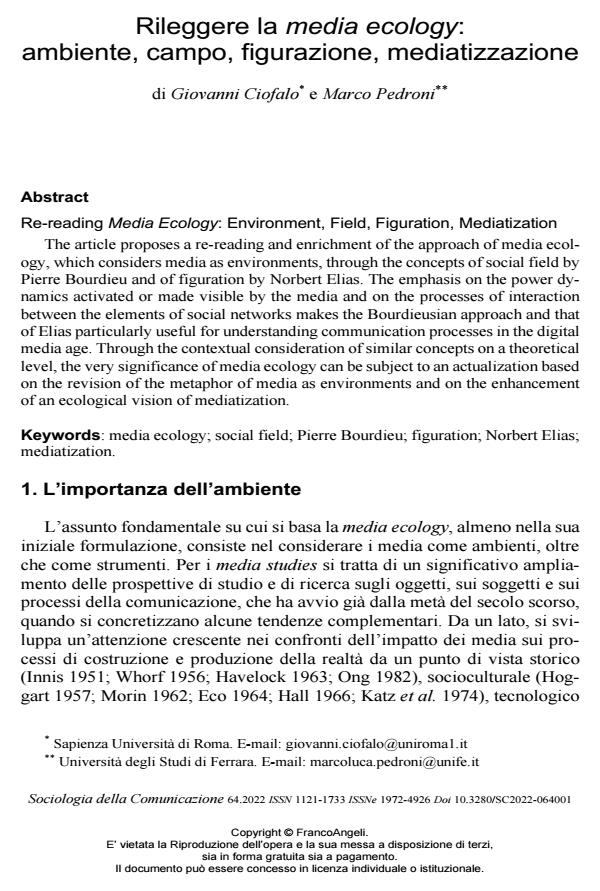Re-reading Media Ecology: Environment, Field, Figuration, Mediatization
Journal title SOCIOLOGIA DELLA COMUNICAZIONE
Author/s Giovanni Ciofalo, Marco Pedroni
Publishing Year 2023 Issue 2022/64
Language Italian Pages 23 P. 5-27 File size 357 KB
DOI 10.3280/SC2022-064001
DOI is like a bar code for intellectual property: to have more infomation
click here
Below, you can see the article first page
If you want to buy this article in PDF format, you can do it, following the instructions to buy download credits

FrancoAngeli is member of Publishers International Linking Association, Inc (PILA), a not-for-profit association which run the CrossRef service enabling links to and from online scholarly content.
The article proposes a re-reading and enrichment of the approach of media ecology, which considers media as environments, through the concepts of social field by Pierre Bourdieu and of figuration by Norbert Elias. The emphasis on the power dynamics activated or made visible by the media and on the processes of interaction between the elements of social networks makes the Bourdieusian approach and that of Elias particularly useful for understanding communication processes in the digital media age. Through the contextual consideration of similar concepts on a theoretical level, the very significance of media ecology can be sub-ject to an actualization based on the revision of the metaphor of media as envi-ronments and on the enhancement of an ecological vision of mediatization.
Keywords: media ecology; social field; Pierre Bourdieu; figuration; Norbert Elias; mediatization.
- ChatGPT Goes to Academia. Una ricerca esplorativa su usi e immaginari dell'intelligenza artificiale da parte di studenti e accademici Giovanni Ciofalo, Marco Pedroni, Francesca Setiffi, in SOCIOLOGIA DELLA COMUNICAZIONE 66/2024 pp.42
DOI: 10.3280/SC2023-066003
Giovanni Ciofalo, Marco Pedroni, Rileggere la media ecology: ambiente, campo, figurazione, mediatizzazione in "SOCIOLOGIA DELLA COMUNICAZIONE " 64/2022, pp 5-27, DOI: 10.3280/SC2022-064001